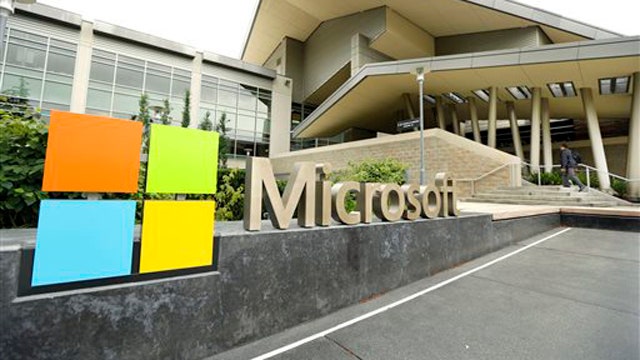Can Windows 10 and HoloLens make Microsoft relevant again?
Mashable's Pete Pachal on the new features of Windows 10 and Microsoft's ambitious HoloLens holographic computer
Microsoft did a deeper reveal of its next operating system on Tuesday, as it tries to make its user experience more consistent across PCs, tablets, and phones. It also offered up a big suprise in the form of new hardware and software used for interacting with holograms.
Probably the biggest news is that that Windows 10 is free. It will be a free upgrade – in the first year after it comes out – for Windows 7, Windows 8.1, and Windows Phone 8.1.
While minor revisions like going from Windows 8 to 8.1 have been free, this is the first time Microsoft has offered a whole new version of the operating system completely ‘gratis.’
“The fact that it’s not only a free upgrade but offers free ongoing improvements is an important story for Microsoft,” said Bob O'Donnell, the president, founder and chief analyst at Technalysis Research, a Foster City, CA-based marketing research firm.
Why free, you ask? One reason is that chief rival Apple has been doing this already with the Mac OS X operating system.
More importantly, the one-year time limit for a free upgrade should spur consumers and businesses to upgrade faster. Ancient versions of Windows, like XP, still populate many PCs. Also, a relatively small percentage of Windows users have upgraded to Windows 8/8.1 Most estimates put this number well under 20 percent.
Windows Holographic
Microsoft also had a big surprise in store.
"Welcome to a new era of Windows. Welcome to Windows Holographic," Alex Kipman, head of Windows Holographic, announced during the presentation.
Microsoft described it as new ways to do work.
Windows Holographic offered users "more immersive ways to play, and new ways to teach and learn,” Kipman said. “Imagine a surgeon learning a procedure without ever having to pick up scalpel.”
Holographic technology — or application programming interfaces (APIs) — is already built into Windows 10, Kipman added. In short, all Windows 10 "universal" apps can be made to work with Windows Holographic.
Microsoft also revealed HoloLens, the company’s holographic glasses.
The glasses are “the most advanced holographic computer the world has ever seen," Kipman said. He added that the glasses are powered by a new kind of "holographic processor."
HoloLens will be available "in the Windows 10 time frame," Kipman said.
New features
Before wowing the audience with holographic technology, Microsoft spent most of the time on Wednesday with a quick review of already-announced features. The most prominent Windows 10 feature involved the operating system being able to recognize whether you’re using a tablet or a PC. Windows will then alter itself accordingly — it will be touch-friendly for a tablet and mouse-and-keyboard friendly for a PC.
Microsoft admitted that this has been a problem with Windows 8/8.1. So, this switching capability is meant, among other things, to make Windows 10 work better on a PC. The current Windows 8/8.1 hybrid touch-desktop modes can be “confusing to people,” as Microsoft executive Joe Belfiore said during the presentation.
Microsoft also talked about a new browser, which the company refers to as “Spartan.”
“A new browser for the modern web,” Belfiore said. Essentially that means the browser will be designed to work better on touch devices like phones and tablets.
Microsoft, for instance, will allow you to “mark up a page with your stylus or finger … express thoughts right on the canvass of the web,” Belifore announced.
Cortana
There will also be more artificial intelligence built in to Microsoft programs. Cortana, Microsoft’s virtual digital assistant — analogous to Apple’s Siri — will monitor what you’re doing while browsing.
Cortana “can show up and suggest things … it’s the only browser with a digital assistant build right in,” Belfiore said.
Cortana will also be available for the first time on PCs. To date, it’s been strictly a phone and tablet affair.
Office changes
No Microsoft presentation would be complete without talking about Office, its widely-used software suite.
Microsoft’s direction for Office is similar to that of the new browser — more touch-friendly. Office will be designed for Windows 10 and be built around the concept of “universal apps,” or applications that run more consistently across all kinds of devices.
A few highlights shown off by Microsoft included integrating a Microsoft Word “format ribbon” right into the phone app as well as a “recent document” list that roams from device to device. Additionally, there will be a new universal app for Outlook Mail and Calendar that incorporates more desktop capability. Microsoft defined this as using “the full Word engine.”
Last but not least, gaming will get a boost, too. With Windows 10, users will be able to stream Xbox One games to any Windows 10 device. A demonstration showed a game being played on Microsoft’s Surface tablet-laptop hybrid that was being streamed from an Xbox.

